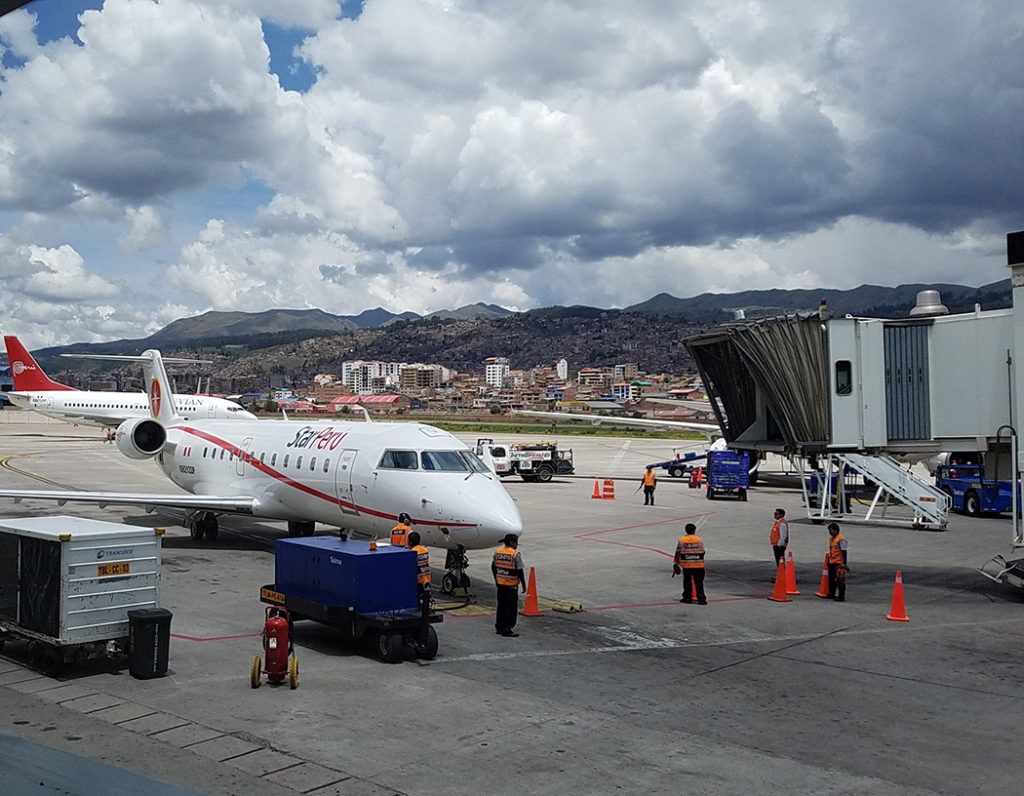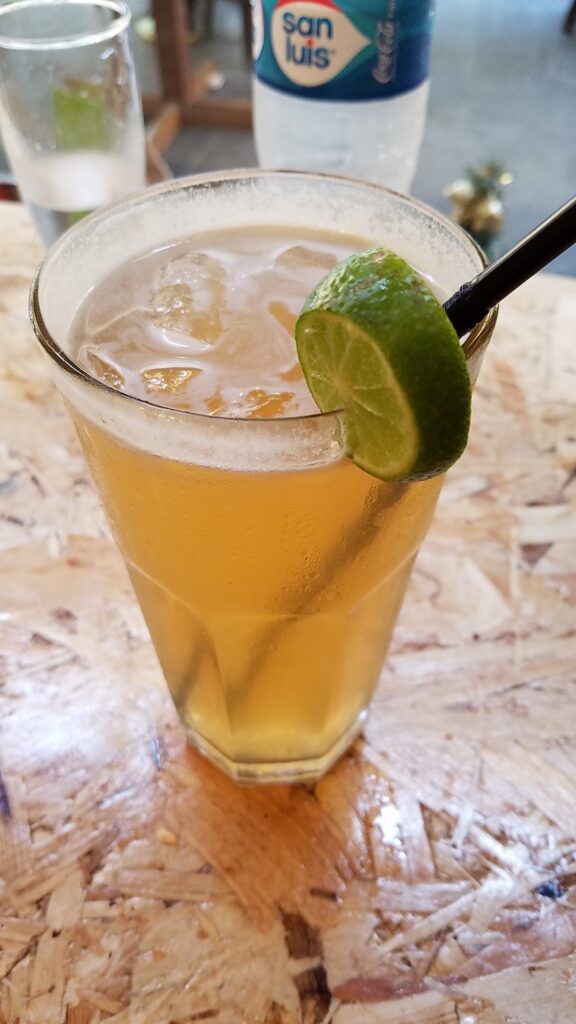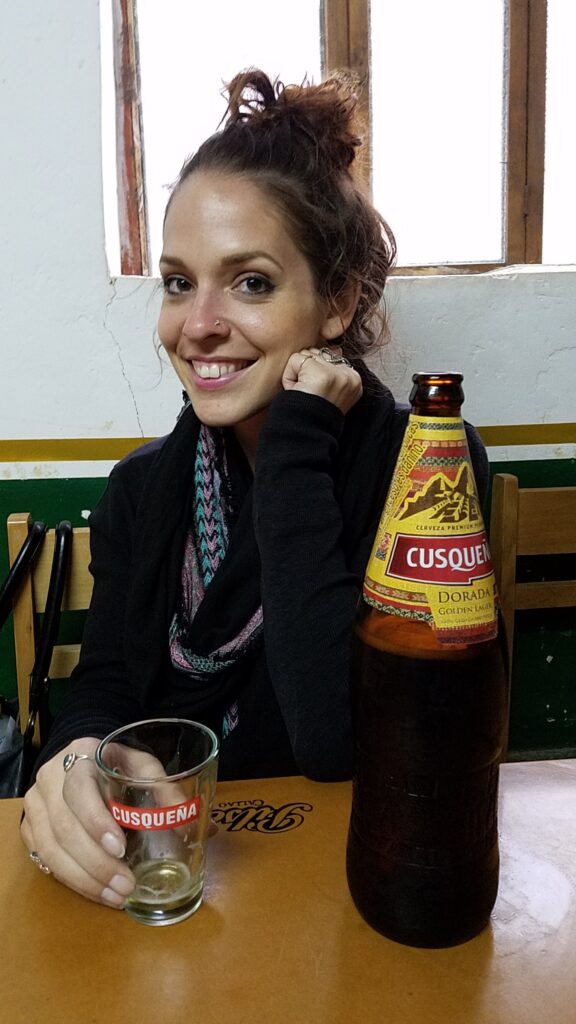Peruvian Beverages | When in Peru, Drink as the Peruvians Do
Coca tea is one of many traditional Peruvian beverages. Chances are you’ve never tried it if you haven’t traveled to places in high elevation. It is an herbal tea made out of the leaves of the coca plant. These same leaves extract alkaloids that are the source for cocaine base. One cup of tea is about 4 mg of said alkaloids while a line of cocaine contains about 20-30 mg. The tea is a stimulant and is known to ease the side effects of high altitudes. Coca tea is also referred to as mate de coca (no relation to yerba mate). The plant, itself, is native to South America.
Upon landing in Cusco, the airport provides coca leaves to weary passengers as they mosey their way to luggage claim. Chewing on the leaves produces numbness in the lips, cheeks, and tongue. I did not wish to experience numbness as it was too reminiscent of the multiple root canals I’ve endured. I love my dentist but I was on vacation. No one goes to the dentist on vacation! Shall the superstitious part of me knock on wood now?

I didn’t think I would like the tea form as much as I did. After walking around Cusco’s cobblestone streets in my heeled boots for a few hours, heart racing and short of breath, it tasted pretty damn good. Most hotels offer it complimentary upon arrival and as often as your heart may desire. Though I really wanted to bring some back with me, coca tea is illegal in the United States. Thankfully, I read blogs and forums prior to my travels that warned against harmlessly packing some in my carry-on.
BETTER SAFE THAN SORRY
Speaking of illegal ingredients, on the last leg of my trip in Lima, and finally, in recovery mode from the nasty flu that had infiltrated my travels, I ordered a limonada de muña. Muña is a mint-like, medicinal herb that is only found in the Amazonian region. Known for its aid in digestion and stomach cleansing, deeming it illegal might be a bit of a stretch. It’s sort of like trying to cross the border checkpoint from Mexico into California with produce – California isn’t going to let that happen. Bringing muña into the United States from South America requires permits and fees and all that mumbo jumbo. Not abiding by these regulations can land one in prison, which I’m sure is not on anyone’s travel itinerary.

PISCO DELICIOUSNESS
While we’re on the topic of traditional Peruvian beverages tried for the first time, I already cited the pisco sour in an earlier post, but I feel it deserves an honorable mention here. Pisco is a type of brandy made by distilling fermented grape juice into a high-proof spirit. This practice is believed to have begun at the end of the 16th century by Spanish settlers. It is the national drink of Peru and has many variations, my favorite among them being passion fruit. ¡Salud!
*Disclaimer: The following includes affiliate links of which I may be compensated should a purchase result from clicking on it. This does not affect you or your cost in any way.

Moving right along, chicha morada, not to be confused with simply chicha, which deserves its own post, is a traditional Peruvian beverage. I enjoyed this non-alcoholic drink made with purple corn alongside my ceviche back in Urubamba where, shortly after, I was dosido-ing with the bathroom door. Made by boiling the corn in water with pineapple and then adding cinnamon, clove, and sugar, it tastes like kool-aid! Served cold, it’s a refreshment that dates back to even before the Incan empire’s creation!
WHEN IN PERU
Finally, on our traditional Peruvian beverages tour is Cusco’s locally brewed cerveza, Cusqueña. Upon trying this at a hole-in-the-wall bar in Ollantaytambo, I learned that it is customary to share rather than to purchase a single beer for oneself when socializing with others. This was evident in the size of this particular beer. I found it comparable to America’s “pitchers of beer” option but also endearing in that in Peru, sharing was the norm. I don’t know about you but I rarely ever get a pitcher when hanging with friends. Then again, I rarely drink beer but that’s beside the point. When in Peru, drink as the Peruvians do!


CC
July 12, 2022 at 8:59 PMYou r absolutely wrong when mentioning that bringing muña is ilegal. Please inform yourself before misleading people..
Linds
July 13, 2022 at 9:21 AMIf you actually read the post, you would see that I said, “deeming it illegal might be a bit of a stretch.” And then I went into specifics of what that means. Please read the entire post before commenting.
Don't Cry over Spilled Beer and Other Age Old Wisdom
January 14, 2023 at 9:32 AM[…] borracha (drunk woman)!” Greg jokingly shouted after my locally brewed beer crashed to the floor of the Peru Rail train. The train conductor opened his door adjacent to our […]